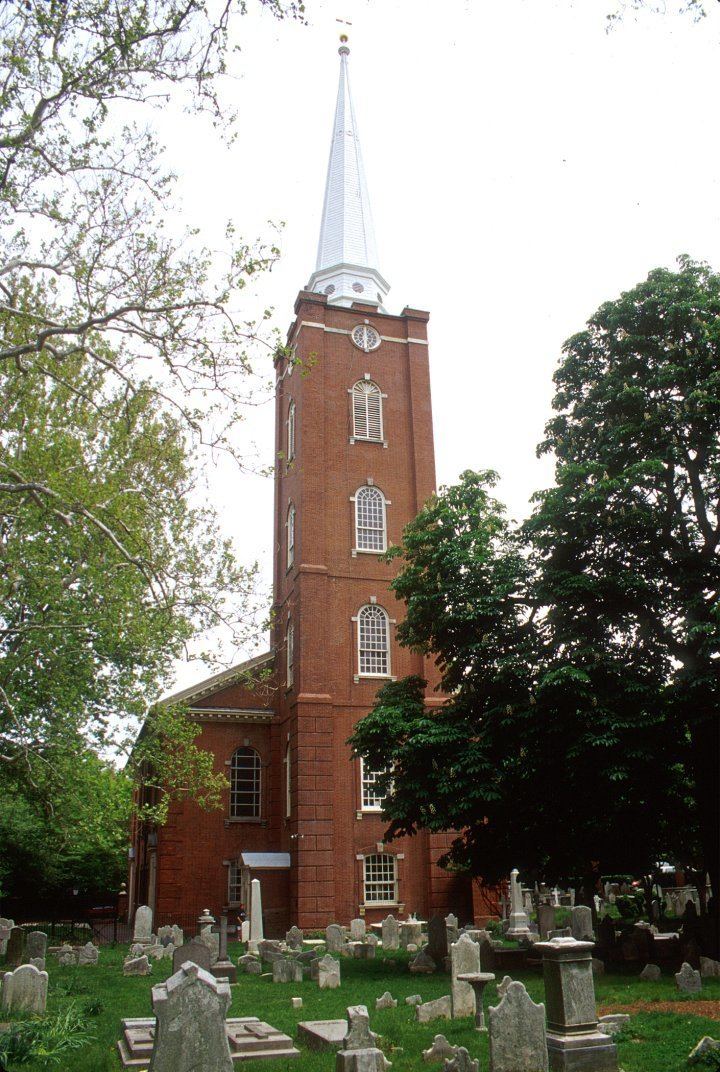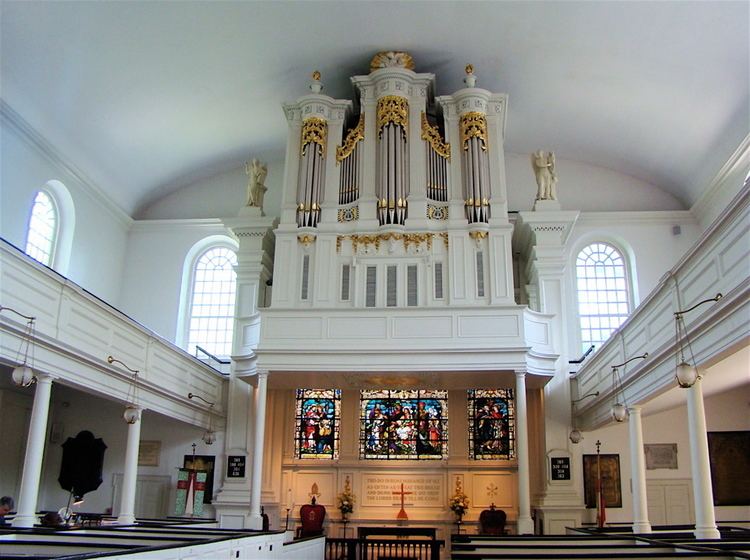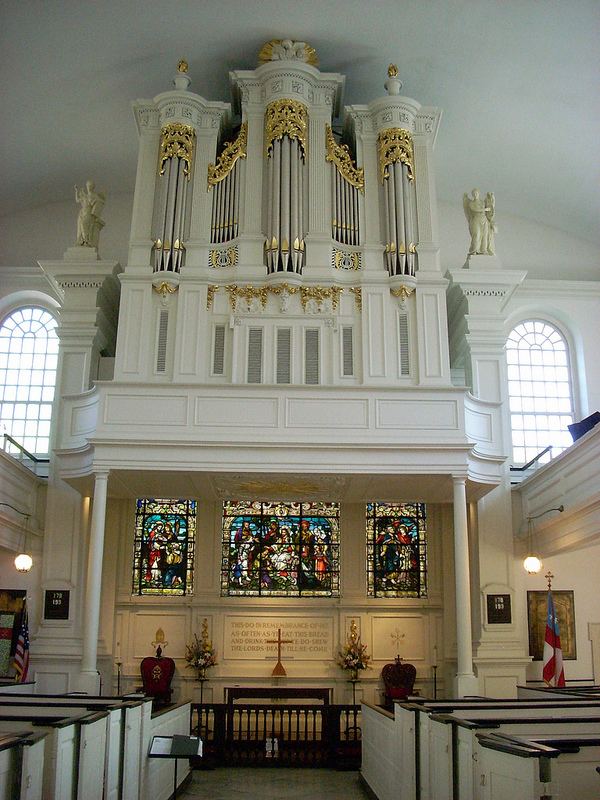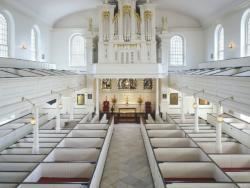Built 1758 Opened 1758 Architectural style Georgian architecture | NRHP Reference # 96000969 Area 6,880 m² Added to NRHP 18 June 1996 | |
Location 3rd and Pine Sts.,
Philadelphia, Pennsylvania Architects William Strickland, Robert Smith Similar Christ Church - Philadelphia, Hill‑Physick House, Thaddeus Kosciuszko National, Church of St Luke and The, Old Pine Street Church | ||
St. Peter's Church is a historic Episcopal church located on the corner of Third and Pine Streets in Philadelphia, Pennsylvania. It opened for worship on September 4, 1761 and served as a place of worship for many of the United States Founding Fathers during the period of the Continental Congresses. The building was designated a National Historic Landmark in 1996. The church remains an active parish, worshiping on Sundays at 9am and 11am. The current rector is the Rev. Claire Nevin-Field.
Contents

Founding and erection

By the mid-1750s, Philadelphia's Christ Church was becoming overcrowded. About 60 parishioners organized themselves into a committee, headed by Colonel Jacob Duché, Sr., to build a new church.

St. Peter's was founded in 1758 in newly settled Society Hill with the first service held on September 4, 1761. The land used was donated in 1757 by Governor Thomas and Richard Penn, sons of William Penn. The Penn family coat of arms can be seen above the wine-glass pulpit and sounding board. St. Peter's was designed by Scottish architect/builder Robert Smith, who designed other noted buildings of the day, among them Carpenters' Hall and the tower of Christ Church in Philadelphia, and Nassau Hall at Princeton University. Much of the £5,000 expense needed to build St. Peter's was raised by lottery.
Early history and architecture

St. Peter's and Christ Church were run jointly until 1832. William White, rector of both churches from 1779 until his death in 1836, was chaplain to the U.S. Congress during the Revolution, founder of the Episcopal Church of the United States in 1784, its first presiding bishop and first bishop of the Diocese of Pennsylvania.

Most of the church remains as it was in the eighteenth century. Smith designed it in the mid-Georgian auditory style, with the classical lines and clear glass windows of the Age of Reason. The pulpit and lectern are set at the opposite end of the aisle from the altar, projecting into the congregation, in order to focus attention on the Word of God, a reflection of the religious thought of the day. The original high-backed box pews, including Mayor Samuel Powel's box which George and Martha Washington often frequented, were designed to retain heat in winter. With the advent of central heating, many churches removed their box pews, but since St. Peter's services are conducted at both ends of the church, the original arrangement has been kept.

Slaves and servants of members sat on hard benches at the west end of the gallery. One of these slaves, Absalom Jones, became a highly respected leader of the free black community of Philadelphia. Together with Richard Allen, he founded the Free African Society, a non-denominational group. Later he founded the first African-American Episcopal Church, the African Church of St. Thomas, in 1794. He was ordained as the first black Episcopal priest in 1804.
The tower and steeple, designed by renowned Philadelphia architect William Strickland, were added in 1842 to house a chime of eight bells, donated by Benjamin Chew Wilcocks and cast at the Whitechapel Bell Foundry in London (which cast the Liberty Bell).
Notable interments
Some of the notable people interred in St. Peter's churchyard include:
